The Particle Generation Method Utilizing an Arbitrary 2D Model for Smoothed Particle Hydrodynamics Modeling and Its Application in the Field of Snowdrift
Abstract
:1. Introduction
2. Introduction of SPH Equations
2.1. Basic SPH Method Equations
2.2. Smooth Radius and Support Domain
2.3. Kernel Function
3. The Control Formula of Snow
3.1. Model Initial Conditions
3.2. Snow Particle Sublimation Control Formula
3.3. Computational Parameters
4. The Control Formula of Snow
4.1. Pixel Value Conversion
4.2. Particle Generation of Embankment and Cutting Models
4.3. Particle Generation of Complex Particle Size Models of Flat Snow Beds
5. Model Verification and Result Analysis
5.1. Model Verification
5.2. Simulation Analysis of Embankment and Cutting
5.3. Analysis of Causes of Snow Disaster
5.4. The Results of Adding a Snow Fence
5.5. The Results of Increasing the Snow Fences
6. Conclusions
- In the start-up phase, the uppermost snow particles obtain almost the same speed under the influence of air drag force. The size and direction of snow particle velocity in the same layer change significantly over time. The pace at which snowflakes sublimate likewise alters as a result of this alteration. The SPH approach yielded a velocity probability distribution of snow particles that is consistent with the earlier experimental findings.
- The sublimation rates at different heights showed a trend of increasing first and then decreasing. Although the temperature and humidity at the low altitude changed significantly, which led to a significant increase in the negative feedback effect, the total sublimation amount showed the opposite trend with the increase in height due to the large particle density of sublimated snow particles. Before humidity stabilizes, it is the most important factor affecting the specific humidity. However, temperature is the primary factor impacting a given humidity level when the humidity is steady.
- Through the SPH simulation software established in this paper, targeted snow and sand prevention was implemented for typical embankment and cutting conditions of wind and snow disasters. Combined with the advantages of the structure of the embankment itself, the establishment of a vertical snow fence can achieve a good snow prevention effect, and the reduction in snow on the subgrade surface can reach more than 85%. For the forward-tilting 45-degree snow fence, the snow prevention effect on the subgrade surface of the cutting is significantly reduced as the friction wind speed increases, and the smallest effect is 30.59% prevention. For the condition of multiple snow fences in the cutting, the snow-proof effect of the subgrade surface reaches about 93%. For different working conditions, different preventive measures can be taken, and our contribution reduces the blindness when experimenting with those measures.
Author Contributions
Funding
Institutional Review Board Statement
Informed Consent Statement
Data Availability Statement
Acknowledgments
Conflicts of Interest
References
- Wang, Z.L. Research on prevention of snow damages in China. Mt. Res. 1983, 1, 22–31. [Google Scholar]
- Oki, T.; Kanae, S. Global hydrological cycles and world water resources. Science 2006, 313, 1068–1072. [Google Scholar] [CrossRef] [PubMed]
- Huang, N.; Li, G. Mountain snow: The source of the mother river-Study of multi-scale and multi-physical process of spatio-temporal evolution of snow distribution. Sci. Technol. Rev. 2020, 38, 10–22. [Google Scholar]
- Guo, S.H.; Chen, R.H.; Han, C.T. Advances in the Measurement and Calculation Results and influencing Factors of the Sublimation of lce and Snow. Adv. Earth Sci. 2017, 32, 1204–1217. [Google Scholar]
- Han, K. A Numerical Simulation on the Development Process of Blowing Snow and the Effects of Snow Grains. Master’s Thesis, Lanzhou University, Lanzhou, China, 2007. [Google Scholar]
- Wever, N.; Lehning, M.; Clifton, A.; Rüedi, J.-D.; Nishimura, K.; Nemoto, M.; Yamaguchi, S.; Sato, A. Verification of moisture budgets during drifting snow conditions in a cold wind tunnel. Water Resour. 2009, 45, W07423. [Google Scholar] [CrossRef]
- Hung, N.; Shi, G.L. The significance of vertical moisture diffusion on drifting snow sublimation near snow surface. Cryosphere 2017, 11, 3011–3021. [Google Scholar] [CrossRef]
- An, Z.; Jin, A.; Musa, R. SPH numerical simulation study on wind-sand flow structure of multi-diameter sand. Comp. Part. Mech. 2022, 10, 747–756. [Google Scholar] [CrossRef]
- Bintanja, R. The contribution of snowdrift sublimation to the surface mass balance of Antarctica. Ann. Glaciol. 1998, 27, 251–259. [Google Scholar] [CrossRef]
- Hung, N.; Dai, X.Q. The impacts of moisture transport on drifting snow sublimation in the saltation layer. Atmos. Chem. Phys. 2016, 16, 7523–7529. [Google Scholar] [CrossRef]
- Shi, G.L. A General Model of Blowing Snow:Saltation and Suspension. Ph.D. Thesis, Lanzhou University, Lanzhou, China, 2018. [Google Scholar]
- Zhang, S.C. Smoothed particle hydrodynamics (SPH) method (a review). Chin. J. Comput. Phys. 1996, 4, 2–14. [Google Scholar]
- Jin, A.F.; Ayni, M.M.T.M. SPH-based numerical calculation of sand grain velocity distribution in wind-blown sand flow. Arid. Zone Res. 2018, 35, 107–113. [Google Scholar]
- Li, D.C.; Guang, X.; Sun, Z.G. Uniform discretization of 2-dimensional complex geometrical area for meshless particle Method. J. Xi’an Jiaotong Univ. 2013, 47, 120–126. [Google Scholar]
- Jin, A.F.; Gheni, M.; Yang, Z.C. Numerical Simulation of Sand Cover Phenomenon on the Desert Highway Using SPH Method. Adv. Mater. Res. 2018, 33, 1075–1082. [Google Scholar] [CrossRef]
- Thorpe, A.D.; Mason, B.J. The evaporation of ice spheres and ice crystals. Br. J. Appl. Phys. 1966, 17, 541–548. [Google Scholar] [CrossRef]
- Bintanja, R. Snowdrift suspension and atmospheric turbulence, Part I: Theoretical background and model description. Bound.-Layer Meteorol. 2000, 95, 343–368. [Google Scholar] [CrossRef]
- Li, H.F.; He, S.Y.; Liu, Q.K. Numerical study on the influence of slope and snow-fence on the flow field around embankment. Eng. Mech. 2021, 38, 21–25. [Google Scholar]
- Lv, X.H. Some Investigations into Wind Snow Two Phase Flow in Wind Tunnel. Ph.D. Thesis, Lanzhou University, Lanzhou, China, 2012. [Google Scholar]
- Li, F.Q. Research on Profiles of Blowing Snow and Snow Distribution on Traffic Line. Master’s Thesis, Shijiazhuang Tiedao University, Shijiazhuang, China, 2021. [Google Scholar]
- Sugiura, K.; Nishimura, K.; Maeno, N.; Kimura, T. Measurements of snow mass flux and transport rate at different particle diameters in drifting snow. Cold Reg. Sci. Technol. 1998, 27, 83–89. [Google Scholar] [CrossRef]
- Dover, S.E. Numerical Modelling of Blowing Snow. Ph.D. Thesis, University of Leeds Department of Applied Maths, Leeds, UK, 1993. [Google Scholar]
- Gordon, K.; Taylor, P. Measurements of blowing snow, Part I: Particle shape, size distribution, velocity, and number flux at Churchill, Manitoba, Canada. Cold Reg. Sci. Technol. 2009, 55, 63–74. [Google Scholar] [CrossRef]

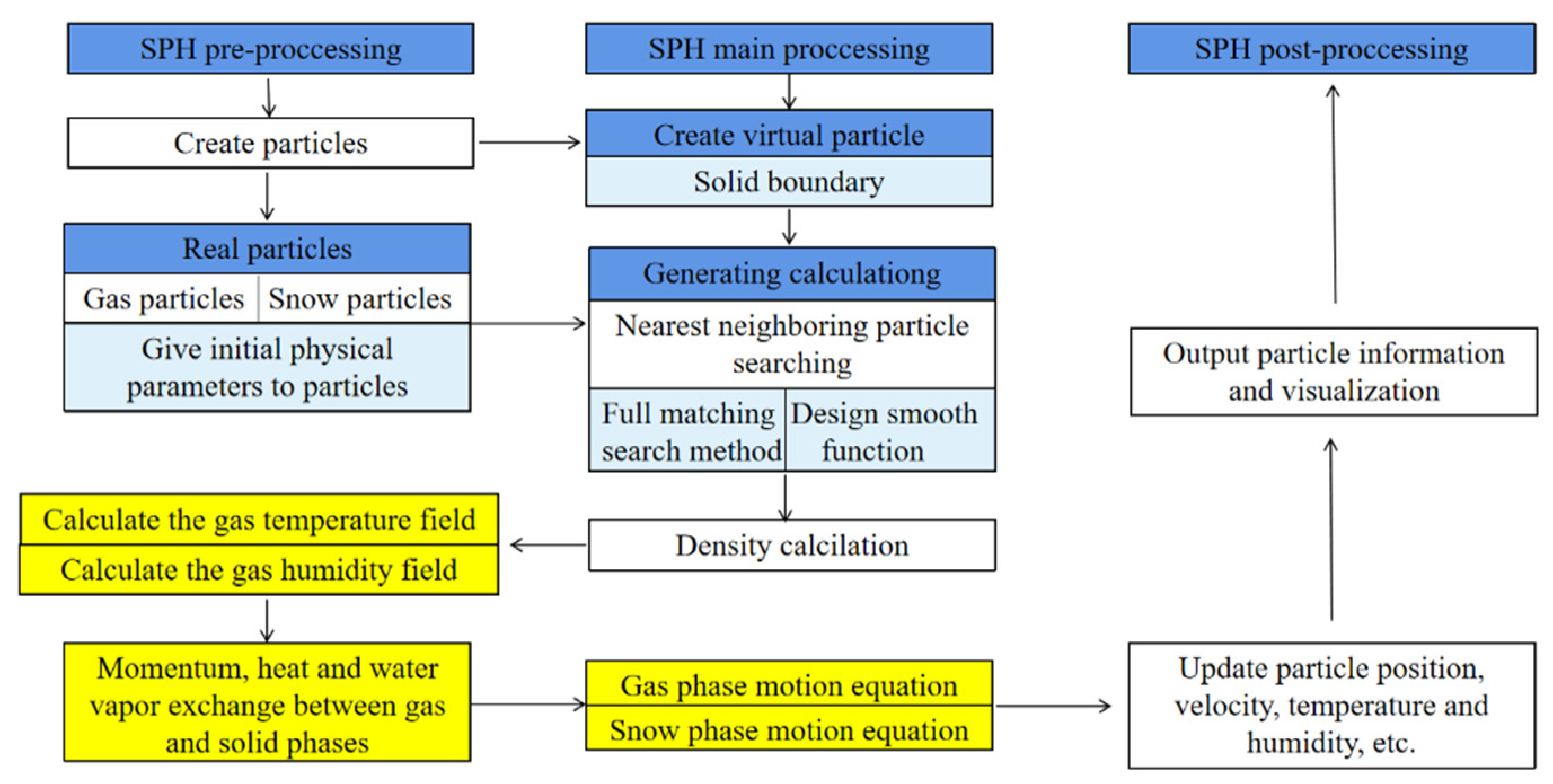






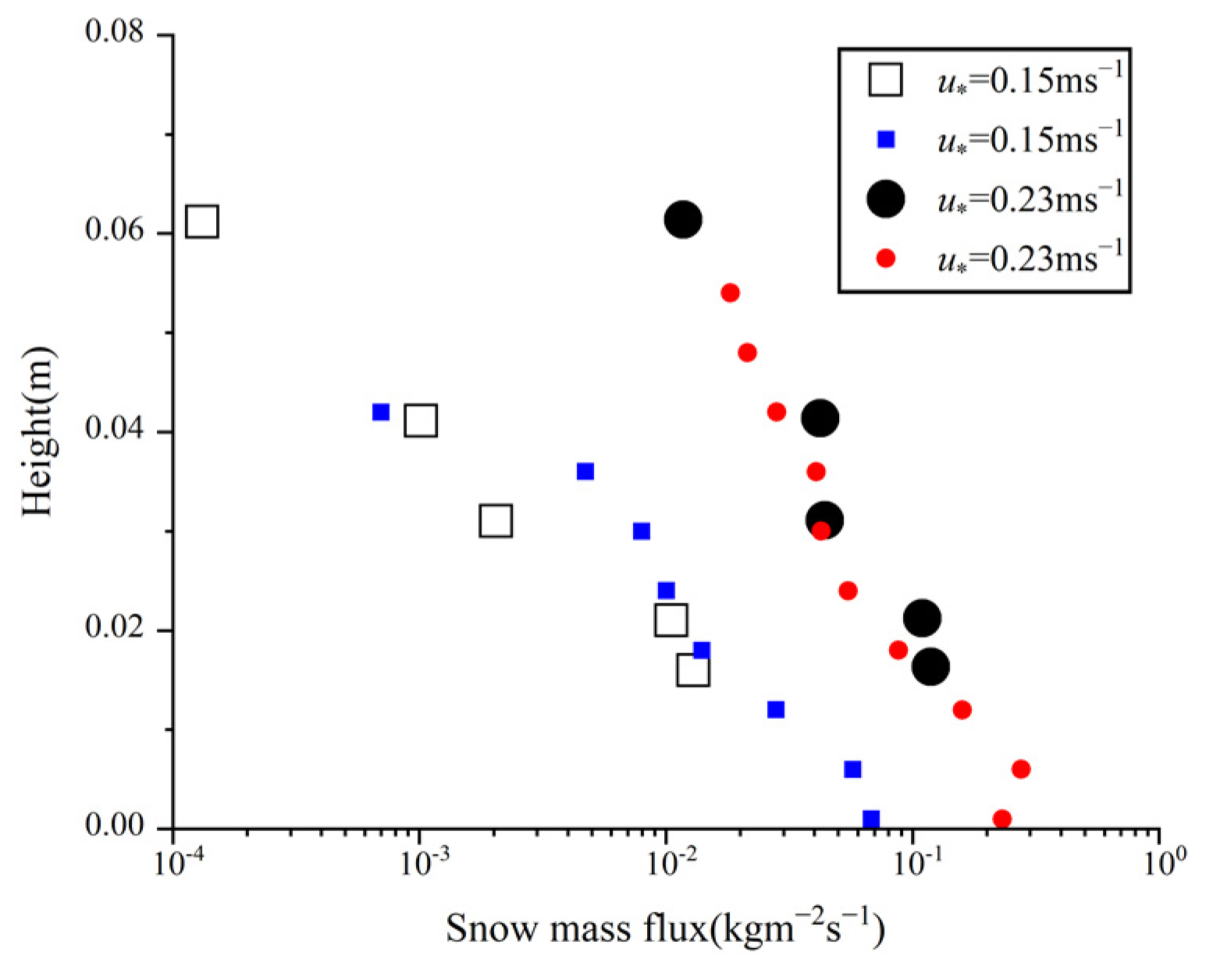

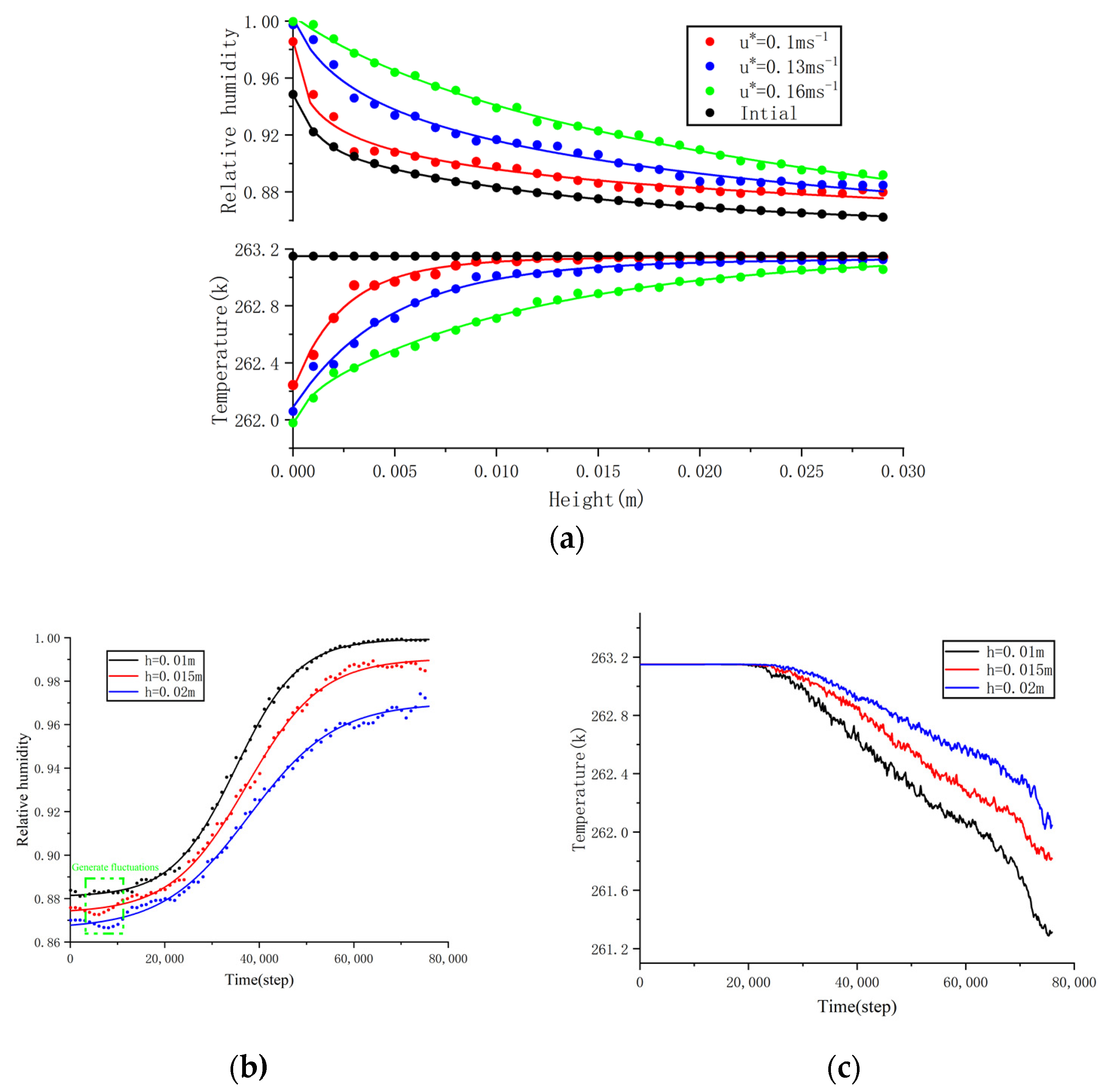


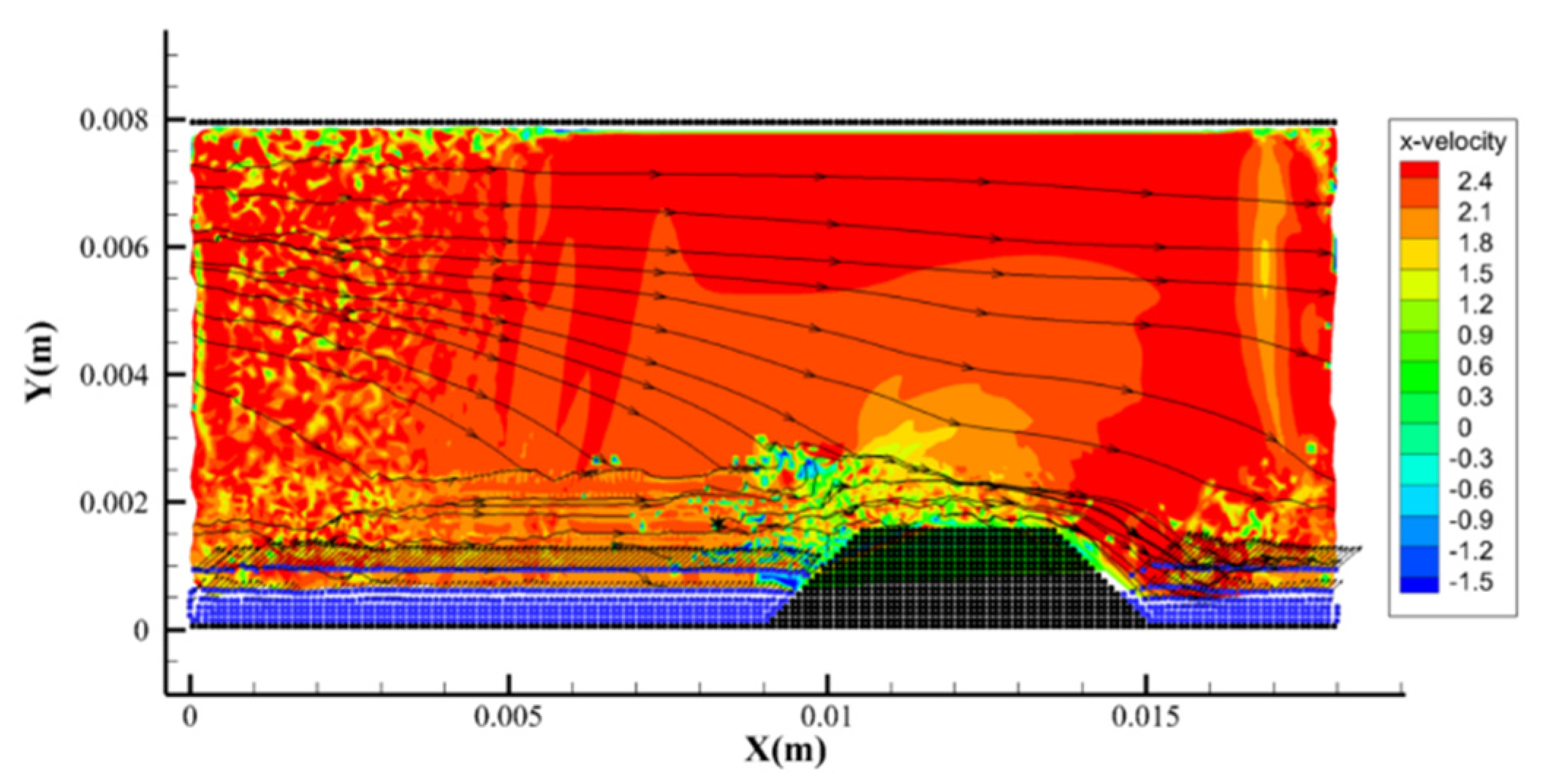

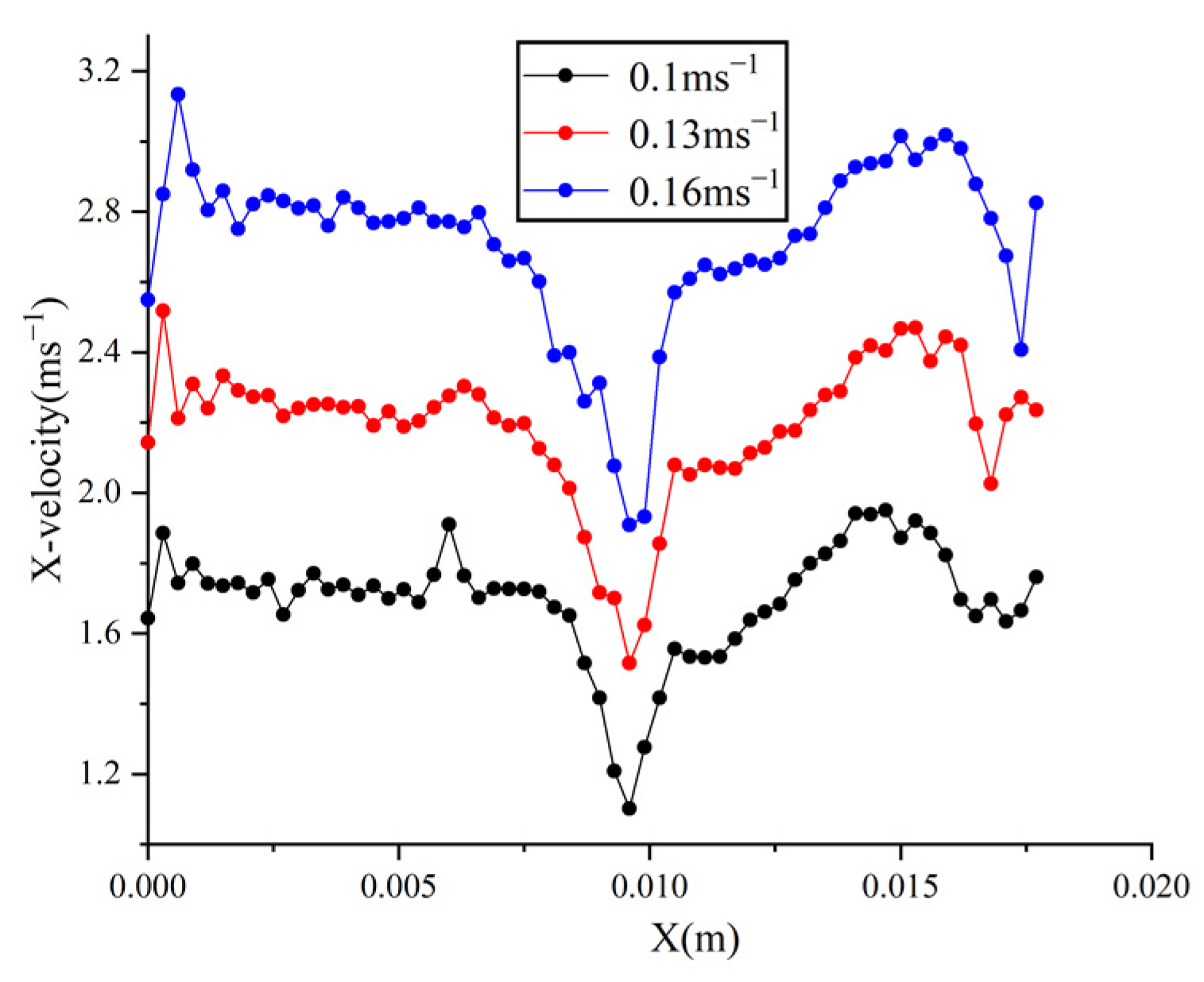



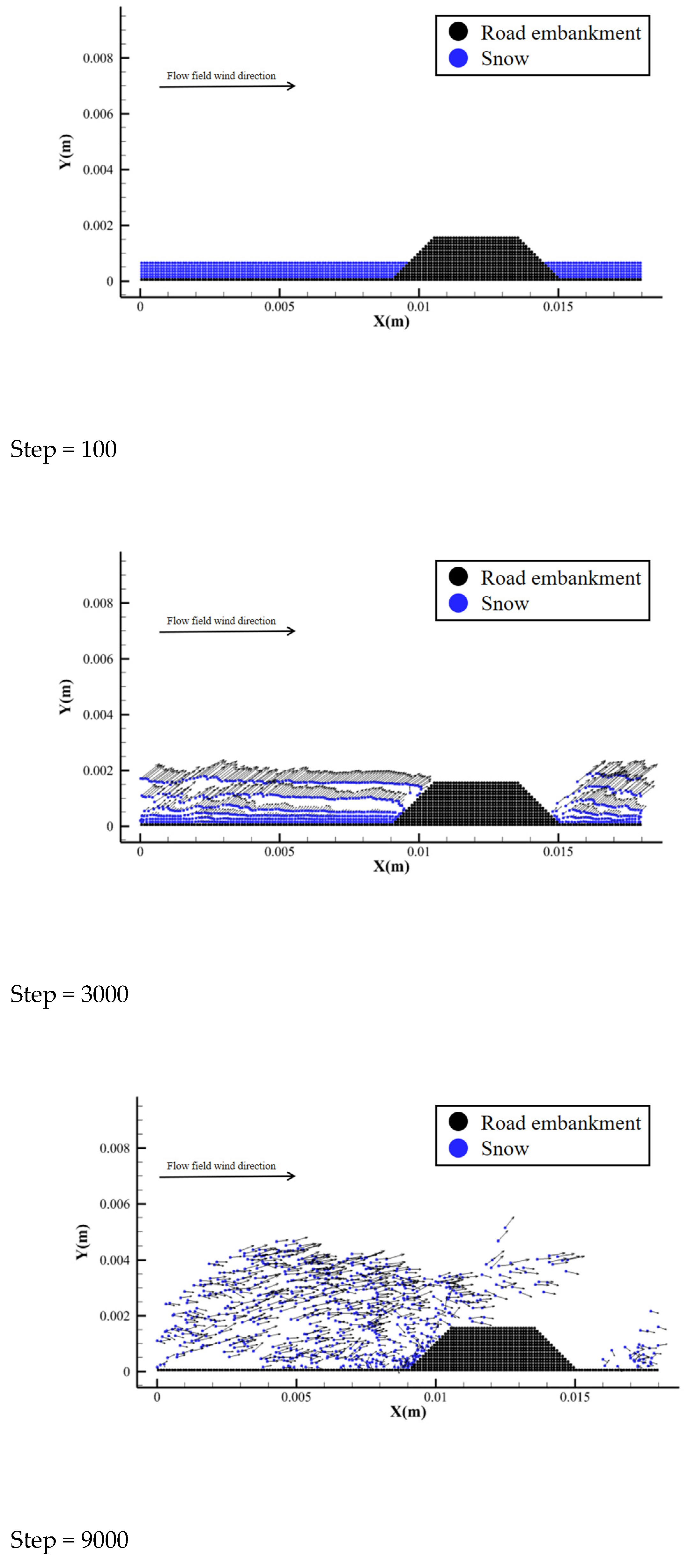





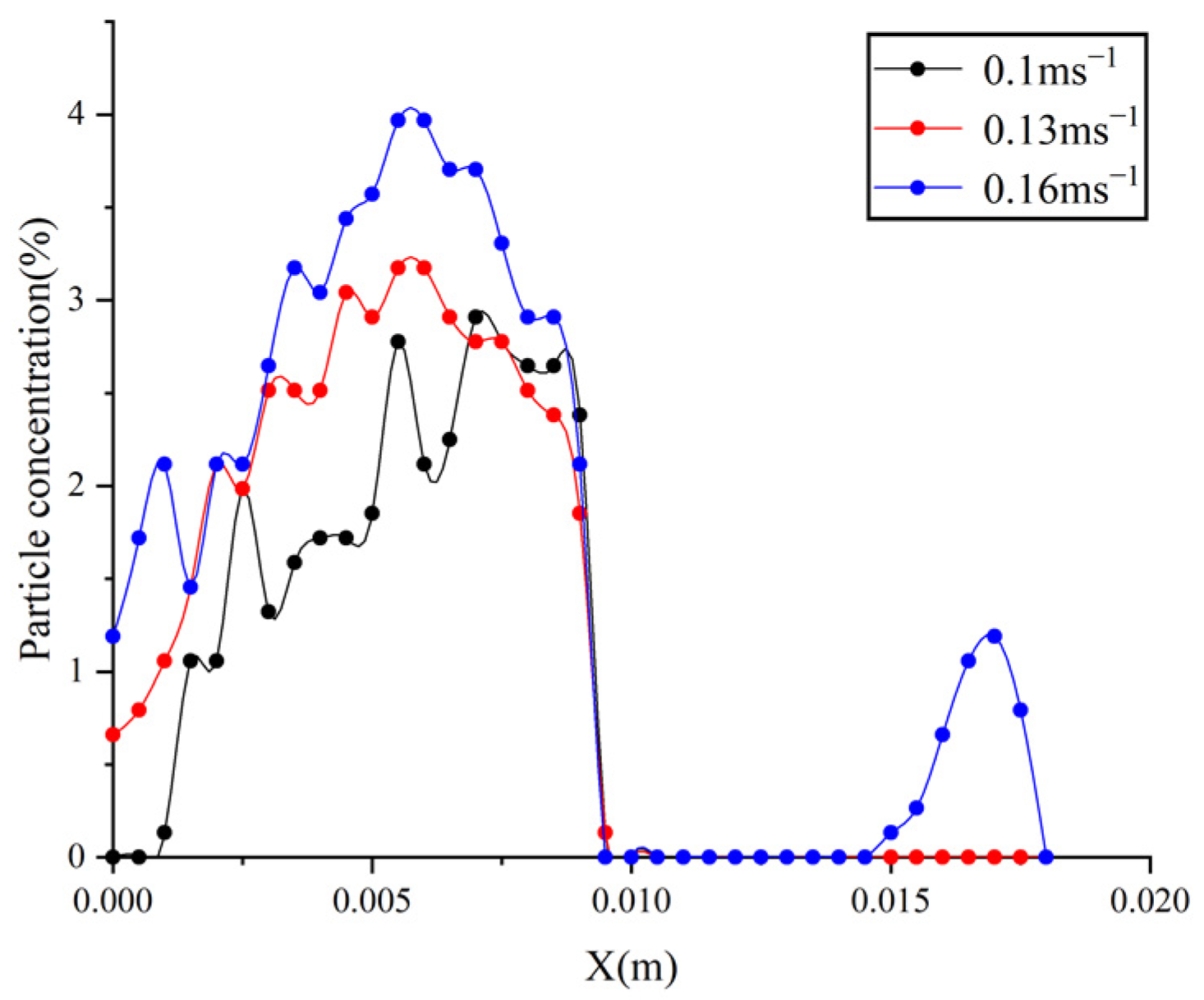


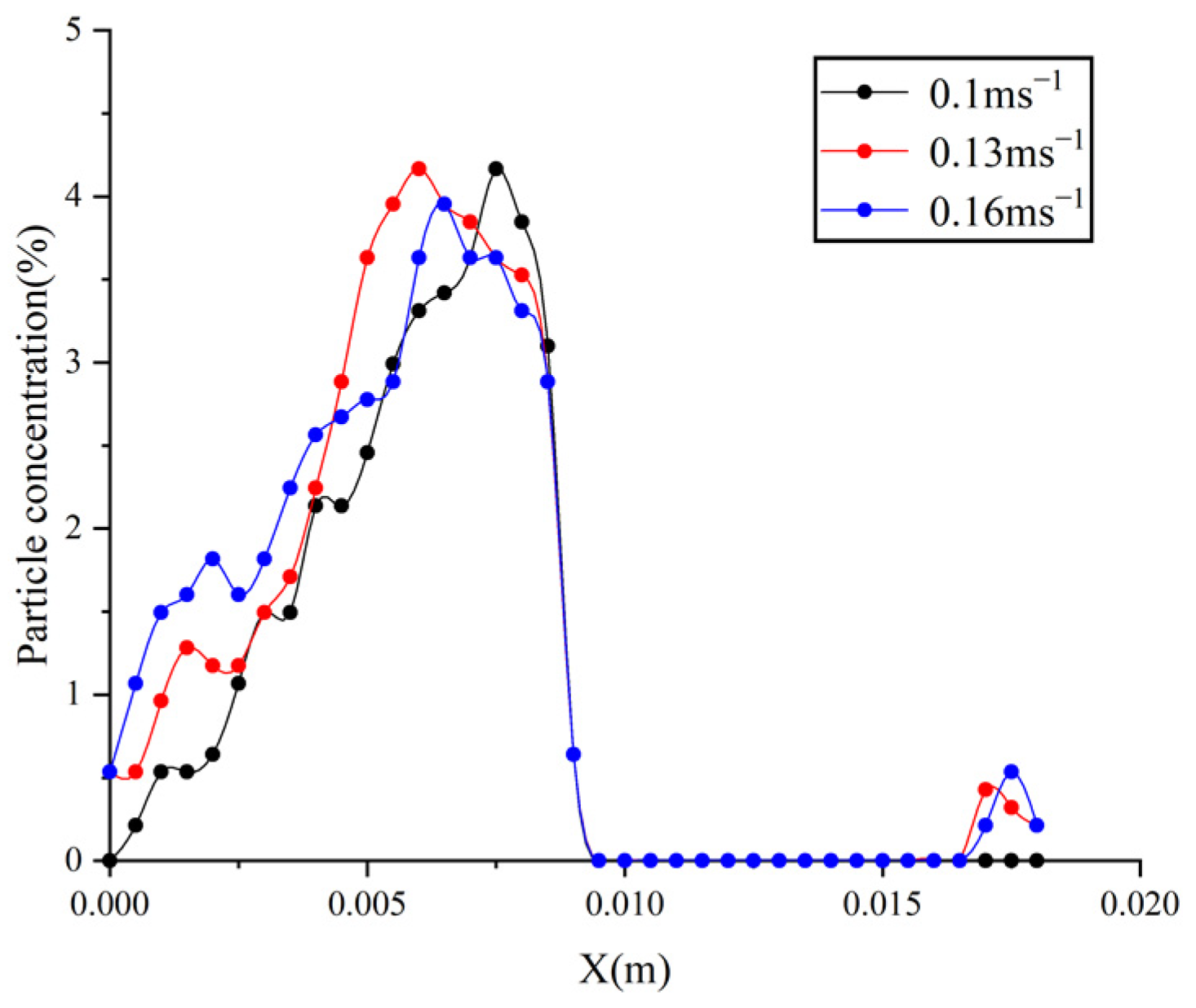
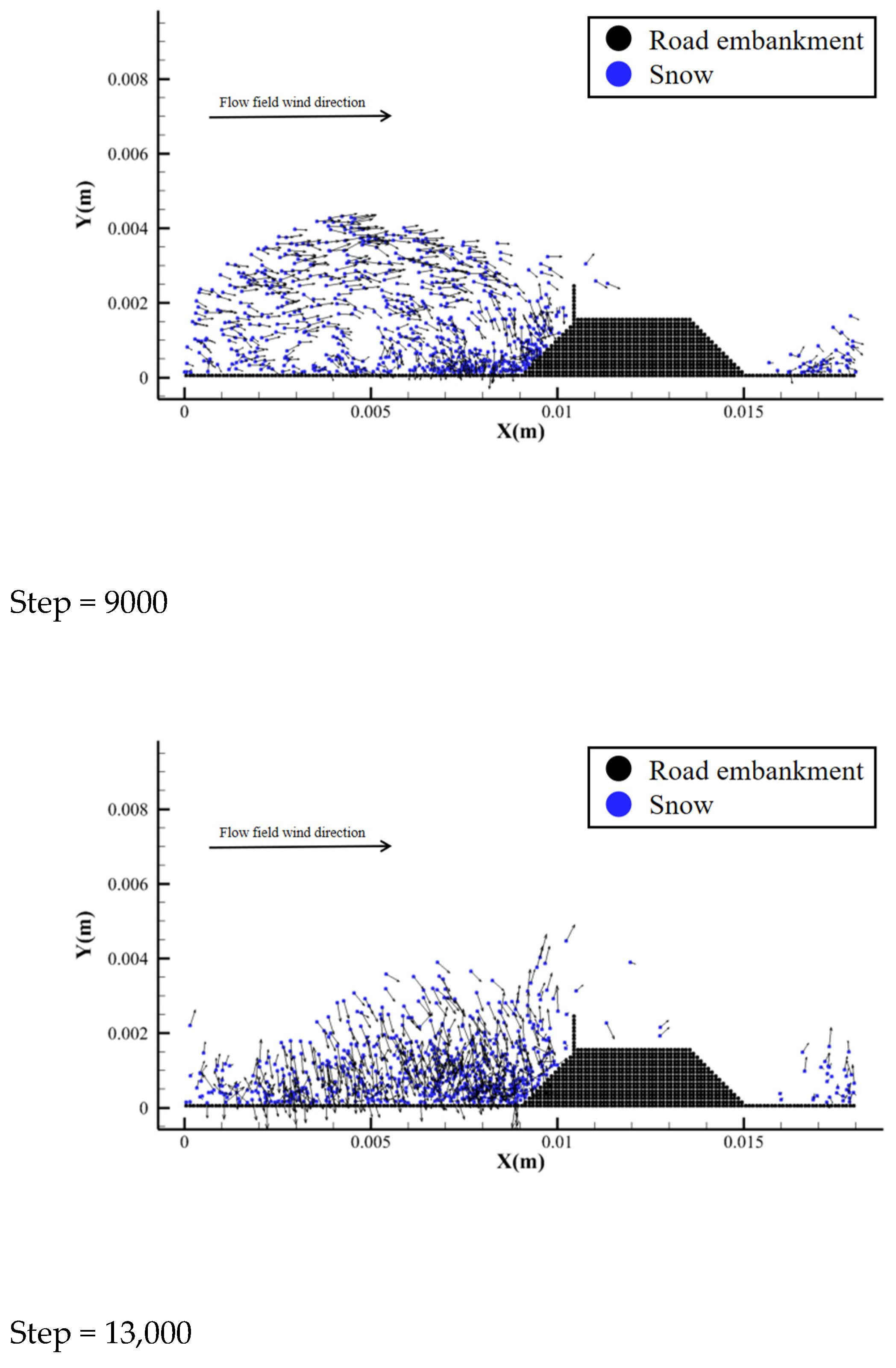


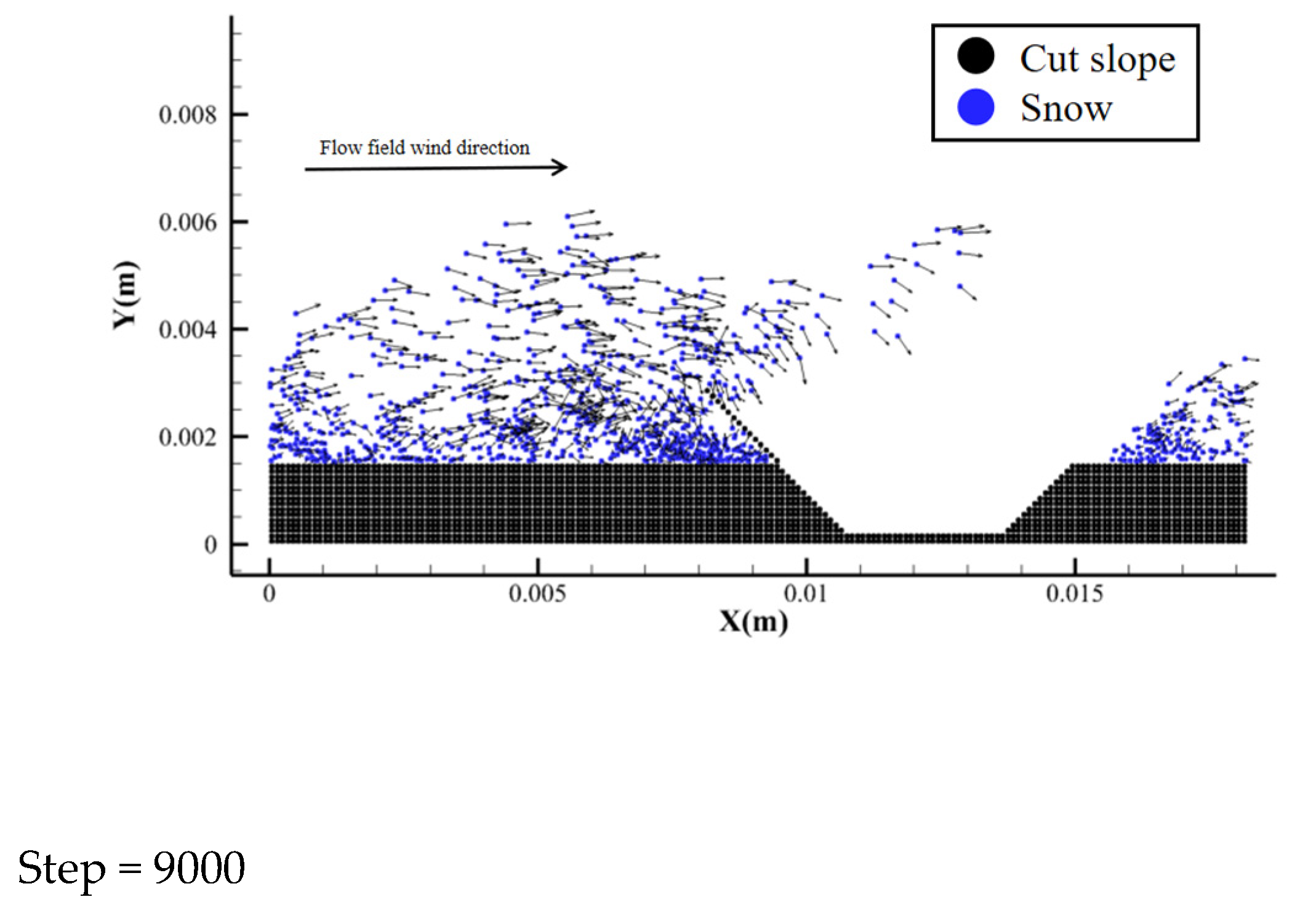
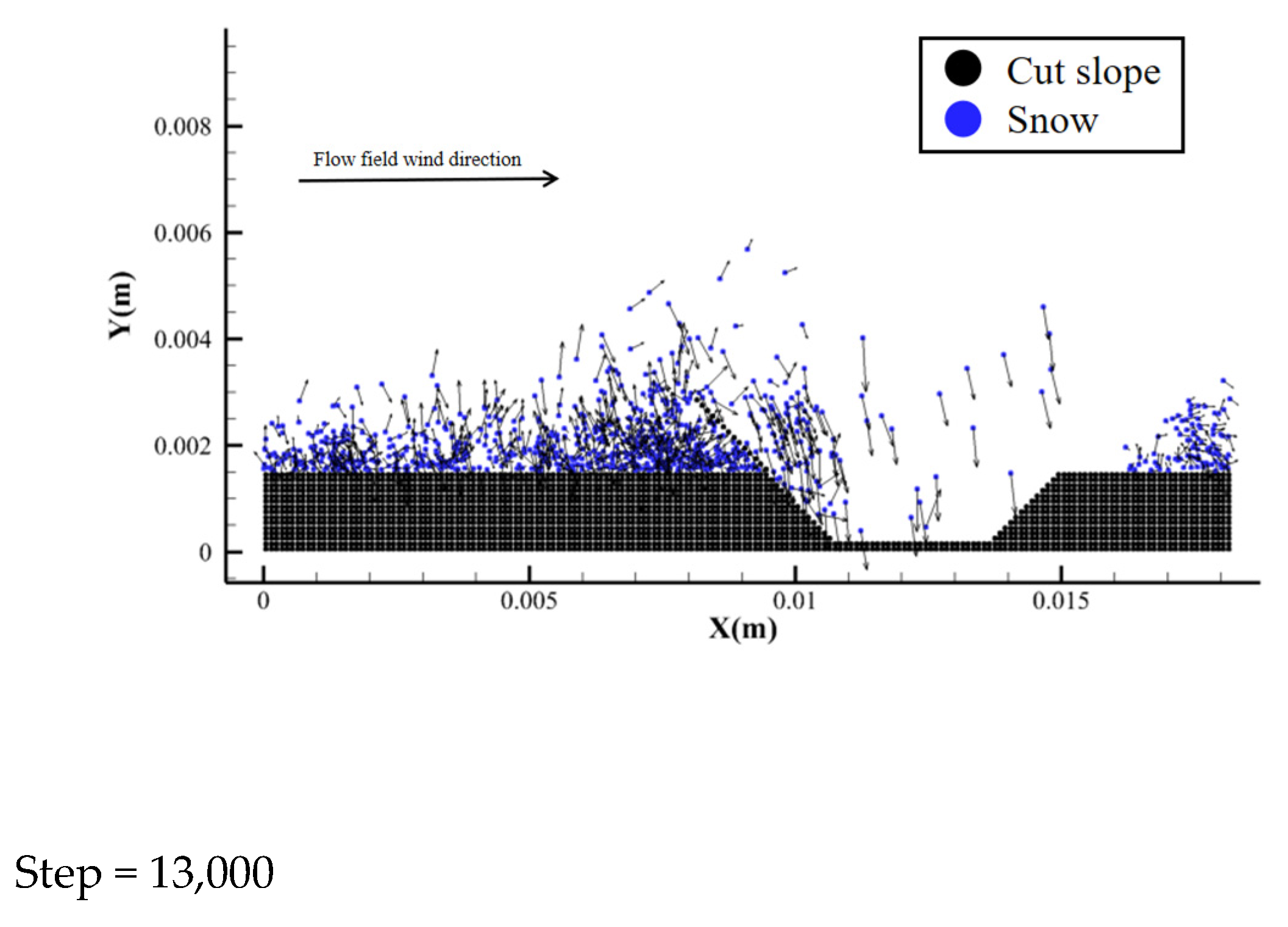

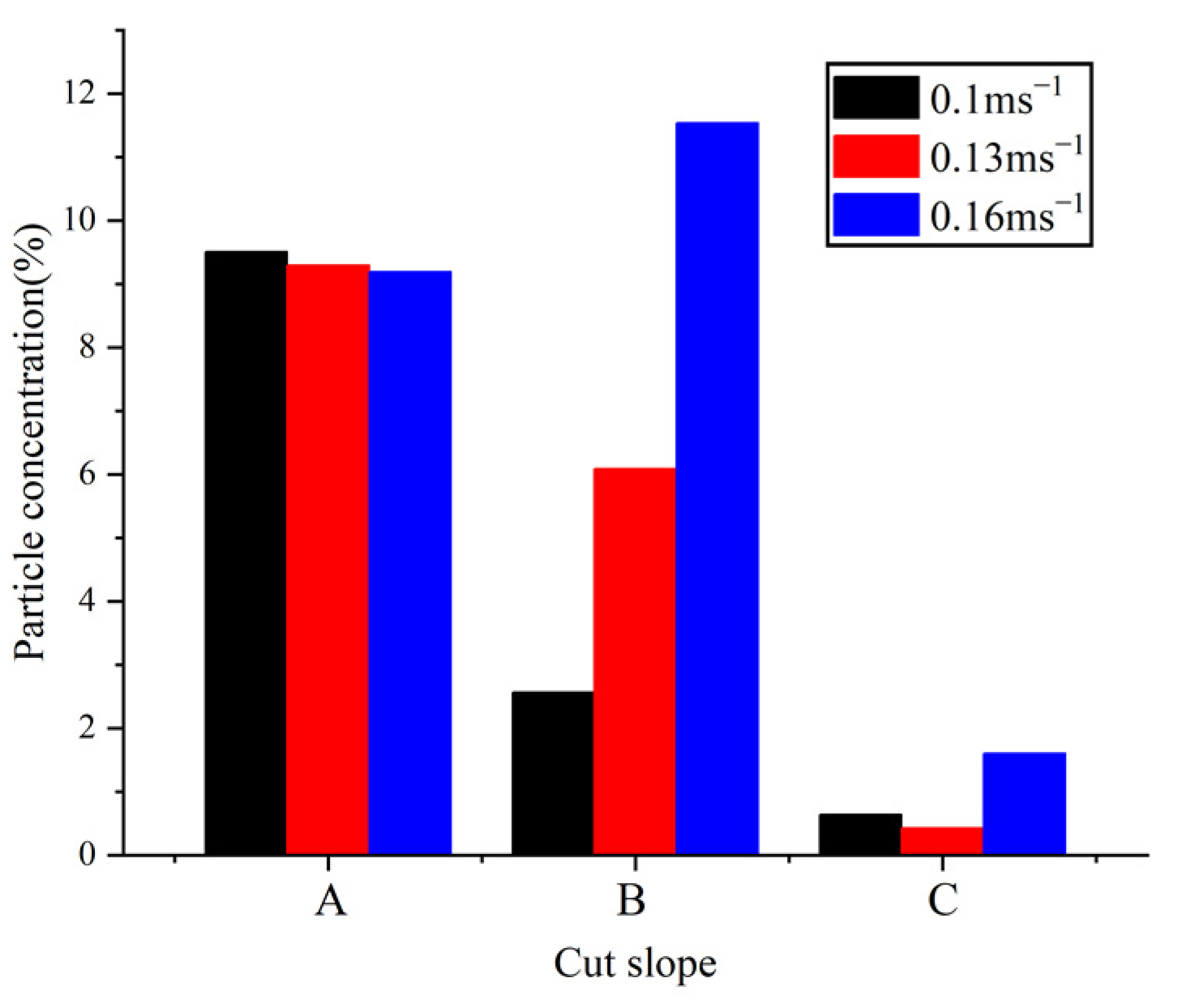


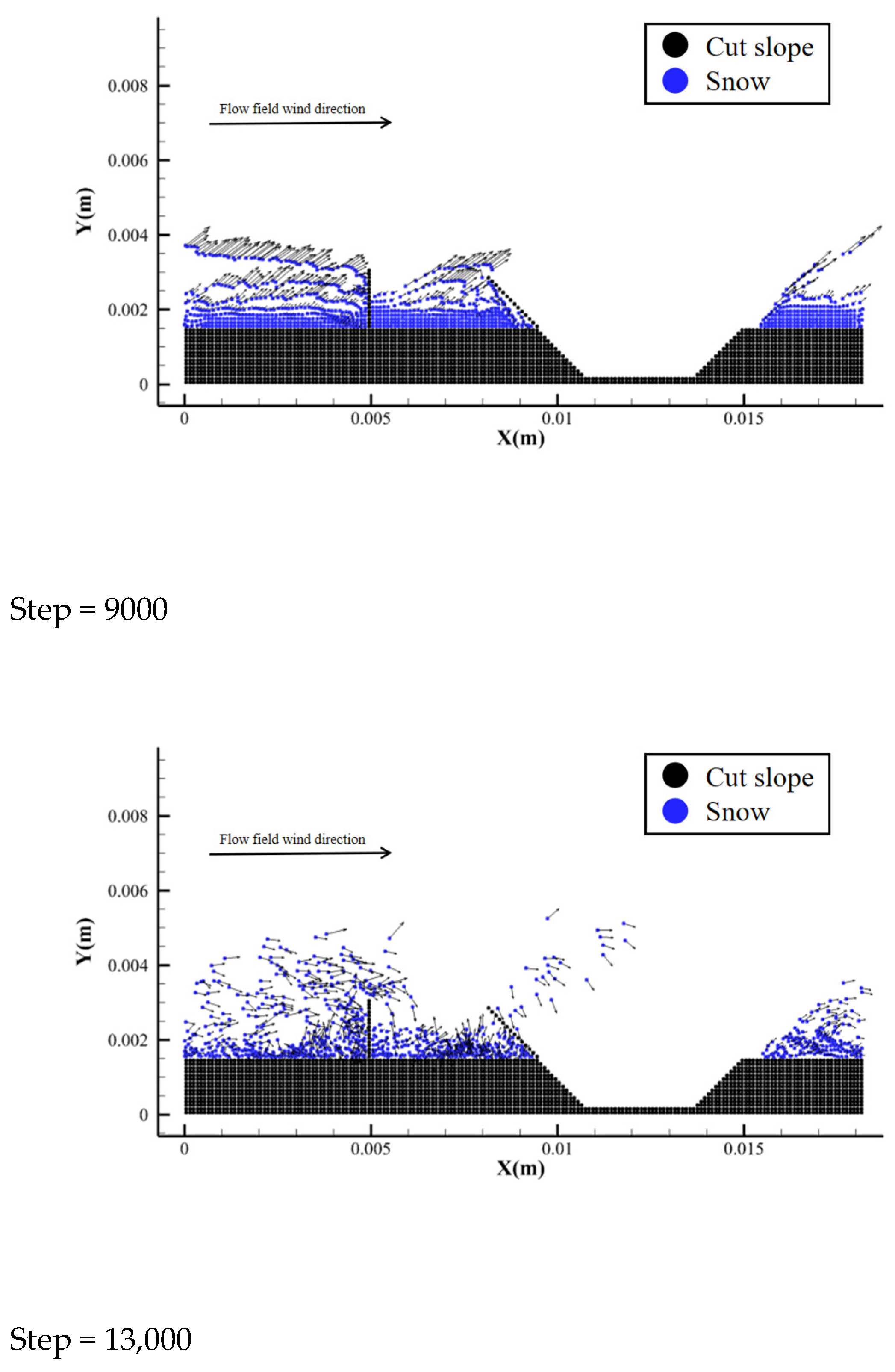
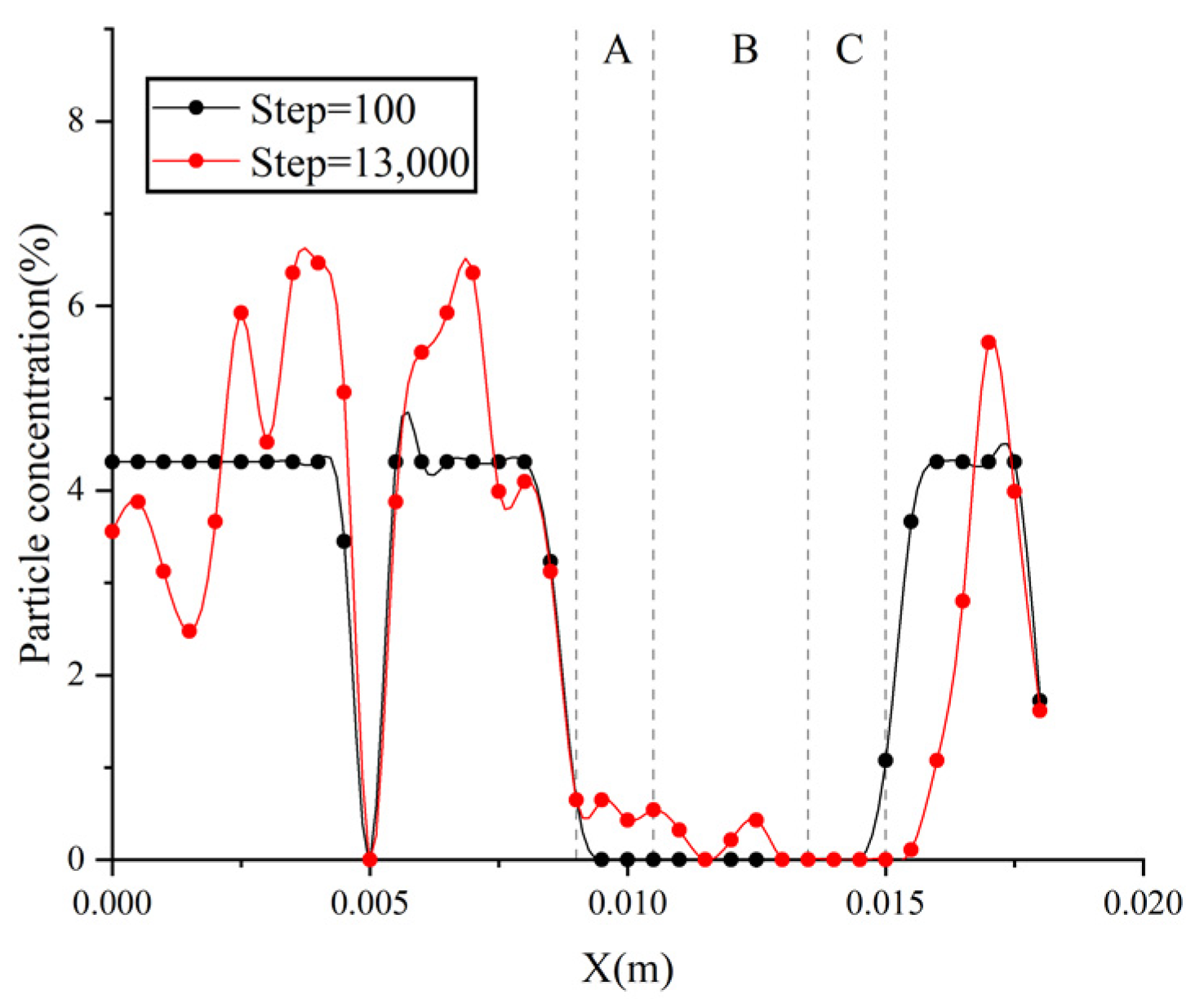
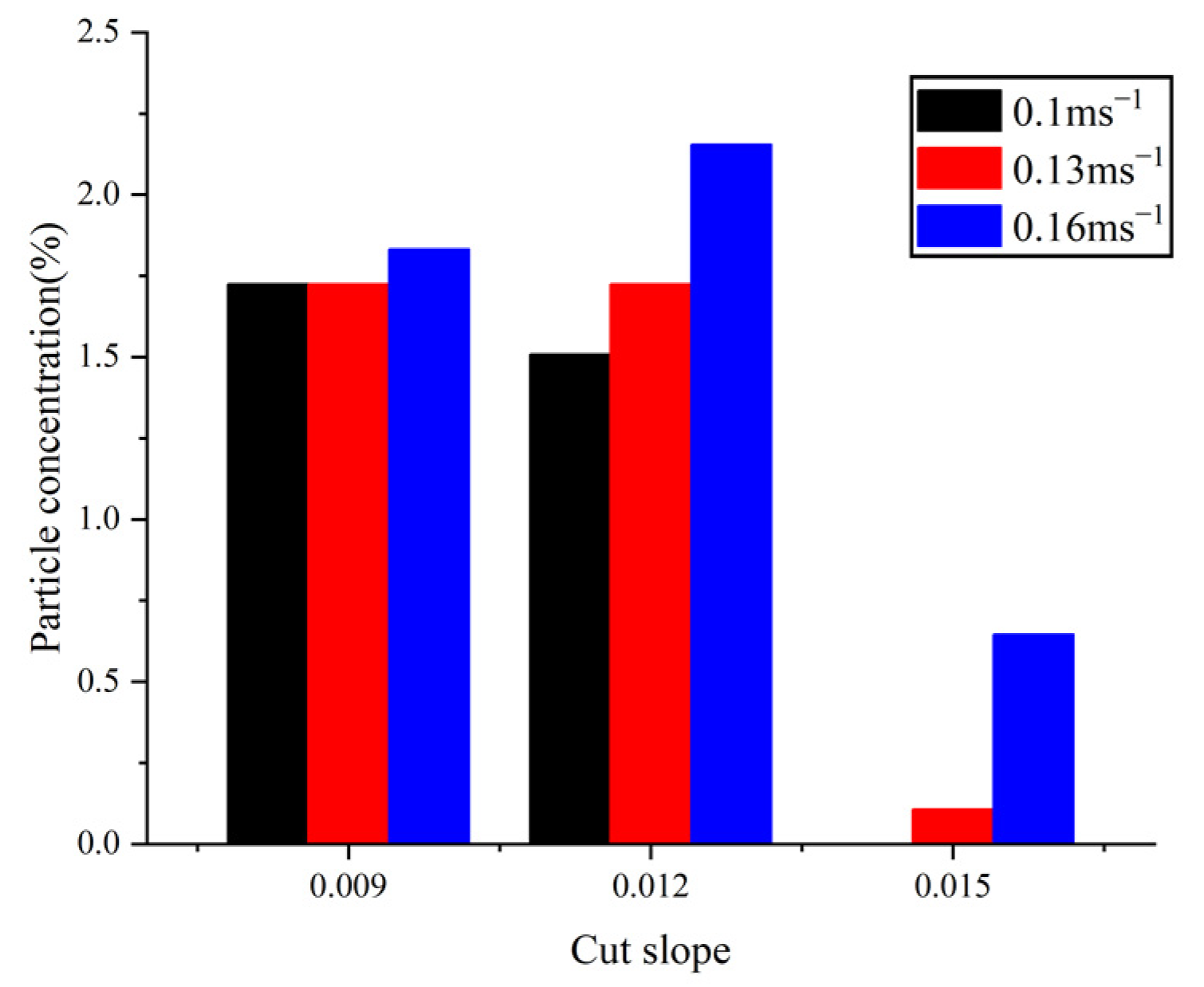
| Gas | Snow | Other Parameters |
|---|---|---|
| Diameter | Density kgm−3 | Time step s |
| Density kgm−3 | Viscosity Nsm−1 | Coefficient of friction |
| Coefficient of restitution | Karman constant |
| D | A | B | C | |
|---|---|---|---|---|
| 0.1 ms−1 | 63.56% | 38.41% | 94.57% | 100% |
| 0.13 ms−1 | 55.94% | 1.67% | 85.62% | 97.87% |
| 0.16 ms−1 | 48.24% | −30.61% | 85.41% | 98.92% |
| D | A | B | C | |
|---|---|---|---|---|
| 0.1 ms−1 | 66.00% | 27.64% | 86.44% | 88.00% |
| 0.13 ms−1 | 64.08% | 5.43% | 77.38% | 94.12% |
| 0.16 ms−1 | 50.47% | 11.34% | 60.00% | 72.73% |
| D | A | B | C | |
|---|---|---|---|---|
| 0.1ms−1 | 91.35% | 86.88% | 92.02% | 100% |
| 0.13 ms−1 | 91.92% | 82.46% | 93.60% | 98.52% |
| 0.16 ms−1 | 89.72% | 82.32% | 92.53% | 89.00% |
Disclaimer/Publisher’s Note: The statements, opinions and data contained in all publications are solely those of the individual author(s) and contributor(s) and not of MDPI and/or the editor(s). MDPI and/or the editor(s) disclaim responsibility for any injury to people or property resulting from any ideas, methods, instructions or products referred to in the content. |
© 2023 by the authors. Licensee MDPI, Basel, Switzerland. This article is an open access article distributed under the terms and conditions of the Creative Commons Attribution (CC BY) license (https://creativecommons.org/licenses/by/4.0/).
Share and Cite
Zhang, S.; Jin, A.; Zheng, B.; Peng, H. The Particle Generation Method Utilizing an Arbitrary 2D Model for Smoothed Particle Hydrodynamics Modeling and Its Application in the Field of Snowdrift. Water 2023, 15, 3763. https://doi.org/10.3390/w15213763
Zhang S, Jin A, Zheng B, Peng H. The Particle Generation Method Utilizing an Arbitrary 2D Model for Smoothed Particle Hydrodynamics Modeling and Its Application in the Field of Snowdrift. Water. 2023; 15(21):3763. https://doi.org/10.3390/w15213763
Chicago/Turabian StyleZhang, Shuzhi, Afang Jin, Bin Zheng, and Hao Peng. 2023. "The Particle Generation Method Utilizing an Arbitrary 2D Model for Smoothed Particle Hydrodynamics Modeling and Its Application in the Field of Snowdrift" Water 15, no. 21: 3763. https://doi.org/10.3390/w15213763
APA StyleZhang, S., Jin, A., Zheng, B., & Peng, H. (2023). The Particle Generation Method Utilizing an Arbitrary 2D Model for Smoothed Particle Hydrodynamics Modeling and Its Application in the Field of Snowdrift. Water, 15(21), 3763. https://doi.org/10.3390/w15213763





